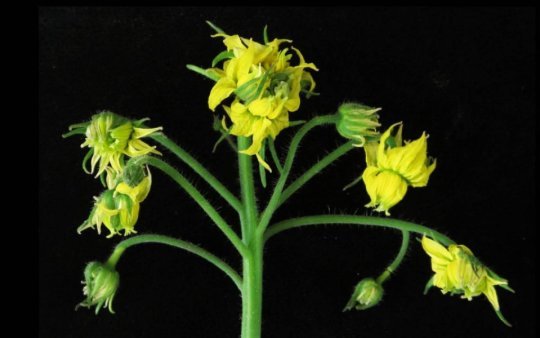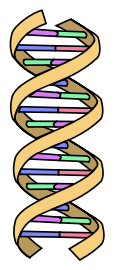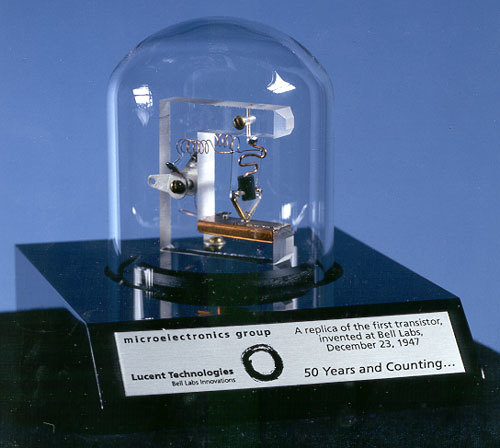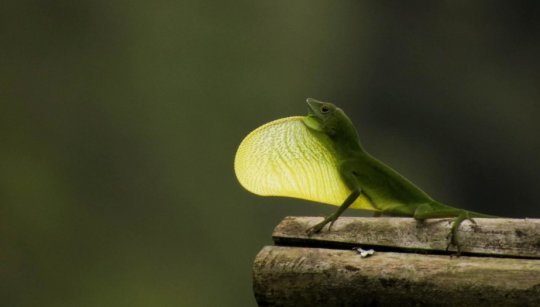Michael J. Behe's Blog, page 491
April 25, 2019
At Nature: Surviving the “reproducibility apocalypse”
 What’s hot? What’s not?/Niklas Bildhauer, Wikimedia
What’s hot? What’s not?/Niklas Bildhauer, WikimediaResearchers, says an experimental psychologist, generally know what they should do:
Yet many researchers persist in working in a way almost guaranteed not to deliver meaningful results. They ride with what I refer to as the four horsemen of the reproducibility apocalypse: publication bias, low statistical power, P-value hacking and HARKing (hypothesizing after results are known). My generation and the one before us have done little to rein these in.Dorothy Bishop, “Rein in the four horsemen of irreproducibility” at Nature
That’s interesting, considering how often we were ordered to see science as the relentless pursuit of truth. If we start with something as basic as giving up gimmicks, maybe we’ll get further.
She offers some thoughts on suggested reforms.
Follow UD News at Twitter!
See also: Another look at the call to abandon statistical significance
and
Pushback against abandoning statistical significance in science
Copyright © 2019 Uncommon Descent . This Feed is for personal non-commercial use only. If you are not reading this material in your news aggregator, the site you are looking at is guilty of copyright infringement UNLESS EXPLICIT PERMISSION OTHERWISE HAS BEEN GIVEN. Please contact legal@uncommondescent.com so we can take legal action immediately.
Plugin by Taragana
DNA uses “climbers’ ropes method” to keep tangles at bay
 Cells use a process somewhat like this to keep DNA from getting tangled/Davide Michieletto
Cells use a process somewhat like this to keep DNA from getting tangled/Davide Michieletto From ScienceDaily:
A process that cells use to unravel knotted strands of DNA — resembling a method used to control climbing ropes — has been uncovered by scientists.
The findings help explain how about 2 metres of DNA can be neatly packaged in each of our cells, in a space that is about the width of a hair.
Scientists have identified two sets of proteins in cells that work together to keep the strands unknotted, avoiding tangles that would hamper vital biological processes.
These proteins are found in many organisms, and scientists believe that their role in managing DNA may be common throughout nature.
One family of proteins — known as SMC — acts like a belay device used by rock climbers, which passes ropes through a series of loops.
These proteins have been found to work alongside another set, known as TopoII, which was previously thought to help solve tangles, but in a way that was not well understood. Paper. (open access) – Enzo Orlandini, Davide Marenduzzo, Davide Michieletto. Synergy of topoisomerase and structural-maintenance-of-chromosomes proteins creates a universal pathway to simplify genome topology. Proceedings of the National Academy of Sciences, 2019; 201815394 DOI: 10.1073/pnas.1815394116 More.
It all just swished into place among unthinking cells billions of yours ago. Otherwise we wouldn’t be here. Go tell it on the mountain.
See also: Before you go: DNA as a laster of resource recycling
The amazing energy efficiency of cells: A science writer compares the cell to human inventions and finds that it is indeed amazingly energy-efficient.
In addition to DNA, our cells have an instruction language written in sugar Of course it all just tumbled into existence and “natural selection” somehow organized everything. As if.
Cells find optimal solutions. Not just good ones.
Researchers build “public library” to help understand photosynthesisWait. “The part of the plant responsible for photosynthesis is like a complex machine made up of many parts, … ” And machines just happen all by themselves, right? There is no information load to account for; it just evolved by natural selection acting on random mutation the way your Android did!
In Nature: Cells have “secret conversations” We say this a lot: That’s a lot of information to have simply come into being by natural selection acting on random mutation (Darwinism). It’s getting not only ridiculous but obviously ridiculous.
Follow UD News at Twitter!
Researchers: Helpful gut microbes send messages to their hosts If the strategy is clearly identified, they should look for non-helpful microbes that have found a way to copy it (horizontal gene transfer?)
Cells and proteins use sugars to talk to one another Cells are like Neanderthal man. They get smarter every time we run into them. And just think, it all just tumbled into existence by natural selection acting on random mutations (Darwinism) too…
Researchers: First animal cell was not simple; it could “transdifferentiate” From the paper: “… these analyses offer no support for the homology of sponge choanocytes and choanoflagellates, nor for the view that the first multicellular animals were simple balls of cells with limited capacity to differentiate.”
“Interspecies communication” strategy between gut bacteria and mammalian hosts’ genes described
Researchers: Cells Have A Repair Crew That Fixes Local Leaks
Researchers: How The Immune System “Thinks”
Follow UD News at Twitter!
Researcher: Mathematics Sheds Light On “Unfathomably Complex” Cellular Thinking
How do cells in the body know where they are supposed to be?
Researchers A Kill Cancer Code Is Embedded in Every Cell
Copyright © 2019 Uncommon Descent . This Feed is for personal non-commercial use only. If you are not reading this material in your news aggregator, the site you are looking at is guilty of copyright infringement UNLESS EXPLICIT PERMISSION OTHERWISE HAS BEEN GIVEN. Please contact legal@uncommondescent.com so we can take legal action immediately.
Plugin by Taragana
Researchers: Plants protect stem cells via diverse backup plans
 Disrupted stem cells produce disorganized mass of petals in tomato plant/Lippman Lab/CSHL, 2019
Disrupted stem cells produce disorganized mass of petals in tomato plant/Lippman Lab/CSHL, 2019From ScienceDaily:
The researchers determined that although the stem cell circuits are essential for flowering plants, the genetic backup systems can vary drastically from plant to plant.
If the gene producing CLV3 is disrupted by a mutation in a tomato, for instance, a related gene will stand in for it. However, Jackson’s team discovered that in the case of maize, two genes are working in parallel to produce the essential signaling protein.
“I like to compare it to a rowboat,” Lippman adds. “In tomato there are two people who can row, but only one is rowing. But if the main rower injures his arm, the second person can take up the oars. In maize, both are rowing all the time, though not necessarily with equal effort. And in Arabidopsis [rockcress] you have one main rower supported by seven, eight, or nine other rowers in the boat; and it looks like only one has a full-size oar. The rest are just using very small paddles.”
“We were surprised to see such big differences,” says Jackson, “but in retrospect it reveals the power of evolution in finding novel ways to protect critical developmental circuits.”
According to Jackson, Lippman and their colleagues, understanding these species-specific strategies for protecting key genetic interactions will be essential for achieving “intelligent crop design” and using genome editing to improve agricultural productivity and sustainability.Paper. (paywall) – Daniel Rodriguez-Leal, Cao Xu, Choon-Tak Kwon, Cara Soyars, Edgar Demesa-Arevalo, Jarrett Man, Lei Liu, Zachary H. Lemmon, Daniel S. Jones, Joyce Van Eck, David P. Jackson, Madelaine E. Bartlett, Zachary L. Nimchuk, Zachary B. Lippman. Evolution of buffering in a genetic circuit controlling plant stem cell proliferation. Nature Genetics, 2019; DOI: 10.1038/s41588-019-0389-8 More.
Steady on here. “Evolution” randomly evolved a number of complex and specified strategies that hit the same target? And we can achieve “intelligent crop design” by co-operating with it? Better take your Darwin pills before you talk about this with colleagues.
See also: Plants “Evolve” During The Course Of An Experiment?
Pest Insect Gets Plants To Transmit False Information To Other Plants
and
Researchers: Yes, plants have nervous systems too Not only that but, like mammals, they use glutamate to speed transmission
Follow UD News at Twitter!
Copyright © 2019 Uncommon Descent . This Feed is for personal non-commercial use only. If you are not reading this material in your news aggregator, the site you are looking at is guilty of copyright infringement UNLESS EXPLICIT PERMISSION OTHERWISE HAS BEEN GIVEN. Please contact legal@uncommondescent.com so we can take legal action immediately.Plugin by Taragana
Researcher: Running marathons made us human
 /
/ Arecibo message re humans to ET, from 1974/Arne Nordmann (norro) (CC BY-SA 3.0 )
Add this one into the (by now, surely) thousands of little things that are said to have made us human:
The role of running in human evolution has been most intensely investigated by Daniel Lieberman, a Harvard University evolutionary biologist and 9-time Boston Marathon runner. Lieberman and others hypothesize that roughly 2 million years ago Homo erectus ancestors, armed with sharpened sticks and stones, were able to kill prey by persistence hunting. This strategy, practiced in some recent forager societies, entails pursing a tasty herbivore in midday sun until the animal collapses from exhaustion and heat stroke. Hunters can then finish it off with simple weapons.
This scenario could solve a major puzzle in human evolution: how did Homo erectus get meat? Researchers assume these hominins hunted because archaeological sites, between 2 and 1 million years old, have yielded plenty of butchered animal bones. Yet stone tools back then were hefty implements, like the Acheulean handaxe — technology better suited for processing carcasses than impaling moving targets.Bridget Alex, “Running Made Us Human: How We Evolved to Run Marathons” at Discover Magazine
All that tinkering sure sounds like a plan.
Follow UD News at Twitter!
See also: Eating fat, not meat, led to bigger human type brains, say researchers. Theories of the evolution of the human brain are a war of trivial explanations that no one dare admit are too trivial for what they purport to explain. It’s like blaming World War II on indigestion, only monstrously bigger.
Earlier discussion of the fat theory.
Starchy food may have aided human brain development
Do big brains matter to human intelligence?
Human evolution: The war of trivial explanations
and
What Taragana
April 24, 2019
Genome-wide associations hammered in recent studies

Two studies show that the effects of nature and nurture are assumed to be clearer than they really are:
The genetics of simple traits can often be deduced from pedigrees, and people have been using that approach for millennia to selectively breed vegetables that taste better and cows that produce more milk. But many traits are not the result of a handful of genes that have clear, strong effects; rather, they are the product of tens of thousands of weaker genetic signals, often found in noncoding DNA. When it comes to those kinds of features — the ones that scientists are most interested in, from height, to blood pressure, to predispositions for schizophrenia — a problem arises. Although environmental factors can be controlled in agricultural settings so as not to confound the search for genetic influences, it’s not so straightforward to extricate the two in humans. …“The new studies are really quite disconcerting,” Barton said, because they demonstrated that scientists had been mistaking biases in the polygenic score calculations for something biologically interesting. Their statistical methods of accounting for population structure were not so adequate after all…
Though it was always understood to be a problem, “no one realized how big of a problem it was,” said Shamil Sunyaev a computational geneticist at Harvard Medical School who performed one of the new eLife analyses…
“It was just that sort of feeling where the world shifts under your feet slightly,” said Coop, who with Berg and their colleagues coauthored the other eLife paper to try to confirm their earlier research. “It’s fairly humbling to see all of that work go away.” …
Barton agreed. “The whole thing is tricky, because the origins of genetic variation in any population are really complicated,” he said. “Now you really can’t take at face value any of these methods over the last four or five years that use polygenic scores.”Jordana Cepelewicz, “New Turmoil Over Predicting the Effects of Genes” at Quanta
Not to worry, if it’s a big enough mess, it will fit right in.
Hat tip: Heather Zeiger
Follow UD News at Twitter!
See also: Protein turns jumping genes, once considered “junk DNA,” from “foes into friends” What? It needs managing but it isn’t junk. “Our results reveal how a family of proteins that was long considered an oddity of nature, turns foes into friends,” says Didier Trono. And almost nothing the Darwinians told us is true.
Copyright © 2019 Uncommon Descent . This Feed is for personal non-commercial use only. If you are not reading this material in your news aggregator, the site you are looking at is guilty of copyright infringement UNLESS EXPLICIT PERMISSION OTHERWISE HAS BEEN GIVEN. Please contact legal@uncommondescent.com so we can take legal action immediately.
Plugin by Taragana
Michael Egnor: Apes are NOT spiritual beings
 Orangutan in Borneo/Eleifert (CC BY-SA 3.0 )
Orangutan in Borneo/Eleifert (CC BY-SA 3.0 )Never mind what Jane Goodall thinks:
In an otherwise silly article about the “evolution” of religion, journalist Brandon Ambrosino quotes primatologist Jane Goodall on the topic of… religious belief among apes:
“The chimpanzee’s brain is so like ours: they have emotions that are clearly similar to or the same as those that we call happiness, sad, fear, despair, and so forth – the incredible intellectual abilities that we used to think unique to us. So why wouldn’t they also have feelings of some kind of spirituality, which is really being amazed at things outside yourself?” …
But what apes (and other non-human animals) cannot do is think abstractly. That is, they cannot think of concepts abstracted from concrete things. Apes can think about a waterfall or a dance that makes them happy or sad. But they cannot think about happiness or sadness in a way that is divorced from the particulars that make them happy or sad. My dog can think about her bone and enjoy playing with it. But she can’t think about “play” as an abstract entity, as a concept.
How do we know that animals cannot think abstractly? First, there has never been a research study that has demonstrated animal capacity for abstract thought.
Michael Egnor, “Why apes are not spiritual beings” at Mind Matters News
Michael Egnor is a neurosurgeon, professor of Neurological Surgery and Pediatrics and Director of Pediatric Neurosurgery, Neurological Surgery, Stonybrook School of Medicine
Believing things about animals that are not true is no way to help them thrive; rather the opposite.
See also: See also: Study: Cats DO Responses to the study, which attracted a good deal of attention, demonstrated many of the misconceptions that naturalism fosters.
Dogs are not as intelligent as seals, say some researchers.
Crows can be as smart as apes
Yes, even lizards can be smart
Is the octopus a second genesis of intelligence?
Follow UD News at Twitter!
Copyright © 2019 Uncommon Descent . This Feed is for personal non-commercial use only. If you are not reading this material in your news aggregator, the site you are looking at is guilty of copyright infringement UNLESS EXPLICIT PERMISSION OTHERWISE HAS BEEN GIVEN. Please contact legal@uncommondescent.com so we can take legal action immediately.
Plugin by Taragana
Megacarnivore found in drawer
The cat came back. so to speak. Actually, extinct Simbakubwa kutokaafrika was not a cat but a hyaenodont, larger than a polar bear, with three rows of shearing teeth. Found between 1978 and 1981, the jawbone had to be stored on special shelving due to its size:
Simbakubwa and other giant hyaenodonts, such as Megistotherium, were a very different form of carnivore from their modern brethren. Whereas modern carnivores have a single row of back teeth that are arranged to chew meat, hyaenodonts had three sets of meat-slicing teeth. “All those extra blades gave them a relatively long jaw that made their heads look a little too big for their bodies,” Borths says. “I imagine them looking a bit like the wargs from Lord of the Rings.” Riley Black, “Fearsome ancient carnivore discovered after fossil lingered for decades in museum drawer” at Nature
Paper. (public access)
It’s suggested that climate change led to hyaenodont’s extinction by reducing the numbers of giant prey animals:
As in any ecosystem, apex predators had a crucial role in the era known to paleontologists as the Oligocene, a period of global transition between the world of the dinosaurs, which had been destroyed an annihilation event, and the modern ecosystems known today. On the African continent, the Simbakubwa would prevent any herbivore species, including the earliest primates, from dominating the landscape.
While hyaenodonts lived in various environments across the globe, they went extinct between 15 to 18 millions ago. Scientists are still unsure of the precise reasons, but their extinction came at a further moment of change, when their forests began a transformation into grasslands. David Grossman, “Scientists Discover Gigantic Prehistoric Cat in a Neglected Museum Drawer” at Popular Mechanics
See also: Gunter Bechly: Ediacaran fossil paper is junk science.
Follow UD News at Twitter!
Copyright © 2019 Uncommon Descent . This Feed is for personal non-commercial use only. If you are not reading this material in your news aggregator, the site you are looking at is guilty of copyright infringement UNLESS EXPLICIT PERMISSION OTHERWISE HAS BEEN GIVEN. Please contact legal@uncommondescent.com so we can take legal action immediately.
Plugin by Taragana
Can a non-physical mechanism be measured?
 Replica of the first working transistor/Bell Labs, 1947
Replica of the first working transistor/Bell Labs, 1947Jonathan Bartlett thinks he knows of one:
It turns out that humans don’t just go from “incompetent” to “competent” at a given task. We develop new ways of doing things that didn’t exist before. These new developments are part of the learning curve concept.
A rule of thumb for the learning curve is that you can achieve an average 20% decrease in costs every time you double your output. But this rule tells us nothing about where that 20% will come from. It tends to originate from a variety of sources …
While the learning curve is not an exact science, the interesting part, in my view, is that such a non-physical mechanism can be measured at all. Jonathan Bartlett, “Can we make money by losing money” at Mind Matters News
Note: The success of the transistor, he notes, depended on shrinking the cost to next to nothing.
If we needed a trillion copies of the device pictured above, chances are we’d still be at it. And it would never do what can be done with newer approaches today anyway.
Follow UD News at Twitter!
See also: Jonathan Bartlett and the war on Occam’s Razor
UD author’s suggested correction to calculus teaching goes viral. The story we ran on the topic at Mind Matters has gone viral via Slashdot, with five thousand views since yesterday afternoon. (A paper about CALCULUS?) Figures, Bartlett must have a point about the problem.
and
Researchers: Microbes “Jeopardize” Neo-Darwinism (And Jon Bartlett’s Response)
Copyright © 2019 Uncommon Descent . This Feed is for personal non-commercial use only. If you are not reading this material in your news aggregator, the site you are looking at is guilty of copyright infringement UNLESS EXPLICIT PERMISSION OTHERWISE HAS BEEN GIVEN. Please contact legal@uncommondescent.com so we can take legal action immediately.
Plugin by Taragana
April 23, 2019
Researchers: Lizards on islands slow down evolution – the opposite of the usual claim

Anolis chloris lizard/J. Salazar, Virginia Tech
From ScienceDaily:
The idea that evolution can be slow on islands is actually somewhat strange. Ever since Darwin’s journey to the Galapagos, islands have been recognized as hotspots of rapid evolution, resulting in many ecologically diverse species. The reason why evolution often goes into overdrive on islands has to do with the ecological opportunity presented by simplified environments. When organisms wash up on remote islands, they find themselves freed of their usual competitors and predators, which frees them to rapidly diversify to fill new niches. This phenomenon of faster evolution is often referred to as the “island effect.”
Yet, the researchers discovered that physiological evolution in Anolis lizards is actually much slower on islands than on the mainland. What is causing evolution to stall?
The same ecological opportunity that frees island organisms from predators also facilitates behavioral thermoregulation. “Whereas mainland lizards spend most of their time hiding from predators, island lizards move around more, and are able to spend much of their day precisely shuttling between sun and shade,” said Muñoz, assistant professor in the Department of Biological Sciences in the College of Science.
If it gets too hot, island lizards simply go find a shady spot. If it gets too cold, they can dash onto a sunny perch. By thermoregulating, island lizards are not just buffering themselves from thermal variation. They are effectively shielding themselves from natural selection. If lizards aren’t exposed to extreme temperatures, then selection on physiology is weakened. The result? Slower rates of physiological evolution. Effectively, island lizards use behavioral thermoregulation like SPF against natural selection!
Jhan Salazar said, “Our results show that faster evolution on islands is not a general rule.” This slower physiological evolution on islands stands in stark contrast to morphology, which has been shown to evolve faster in island anoles. When it comes to morphology and physiology on islands, it seems we are looking at different sides of the same coin. The same ecological release from predators and competition that allowed for the truly impressive amount of morphological diversification that has appeared quickly among island anoles, seems to additionally allow for more behavioral thermoregulation which slows physiological evolution.Paper. (paywall) – Jhan C. Salazar, María del Rosario Castañeda, Gustavo A. Londoño, Brooke L. Bodensteiner, Martha M. Muñoz. Physiological evolution during adaptive radiation: A test of the island effect in Anolis lizards. Evolution, 2019; DOI: 10.1111/evo.13741 More.
Presumably, readers see here what we mean when we say that current evolution theory explains everything, anything, and nothing.
It would have been simpler to say that there is no consistent “island rule” but that would imply that current Darwinian theory does not have an answer for everything. Perhaps many island life forms don’t evolve very much or very fast but the ones that do attract attention.
See also: Yes, even lizards can be smart
Convergent Evolution: Independent Origin Of Lizard Toepads = Evolution A “Tinkerer”?
Follow UD News at Twitter!
Copyright © 2019 Uncommon Descent . This Feed is for personal non-commercial use only. If you are not reading this material in your news aggregator, the site you are looking at is guilty of copyright infringement UNLESS EXPLICIT PERMISSION OTHERWISE HAS BEEN GIVEN. Please contact legal@uncommondescent.com so we can take legal action immediately.
Plugin by Taragana
Protein turns jumping genes, once considered “junk DNA,” from “foes into friends”
 What? It turns out it is not junk. It needs managing but it isn’t junk.
What? It turns out it is not junk. It needs managing but it isn’t junk.
From ScienceDaily:
The human genome is fascinating. Once predicted to contain about a hundred thousand protein-coding genes, it now seems that the number is closer to twenty thousand, and maybe less. And although our genome is made up of about three billion units — “base pairs” — many of them don’t seem to belong to specific genes, and for that reason they were delegated to the dustbin of genetics: they were literally called “junk DNA.”
But as it turned out, junk DNA is actually critical in coordinating and regulating the work of actual genes. For example, there are sequences of DNA that “jump” around the genome and influence gene expression. These jumping units are called “transposable elements” and their number is estimated at over 4.5 million in a single genome.
In short, the genome is nothing like what we were led to believe.
But now get this:
When the genome of the human embryo is activated shortly after the egg is fertilized by the sperm, transposable elements are among the first sequences to be expressed. The researchers found that KZFPs quickly “tame” these elements, minimizing their transcriptional impact during the earliest stages of early embryogenesis. This allows transposable elements to be subsequently used later in development and in adult tissues. In this way, KZFPs play a key role in defining how the human genome is regulated, by facilitating the incorporation of transposable element-based controlling sequences into transcriptional networks.
“Our results reveal how a family of proteins that was long considered an oddity of nature, turns foes into friends,” says Didier Trono. “They show that KZFPs do not just sentence transposable elements to perpetual silence, but domesticate their formidable regulatory potential for the benefit of our genome. But our findings also imply that anomalies in the completion of this process would fatally compromise the earliest phases of human embryonic development.” Paper. (open access) – Julien Pontis, Evarist Planet, Sandra Offner, Priscilla Turelli, Julien Duc, Alexandre Coudray, Thorold W. Theunissen, Rudolf Jaenisch, Didier Trono. Hominoid-Specific Transposable Elements and KZFPs Facilitate Human Embryonic Genome Activation and Control Transcription in Naive Human ESCs. Cell Stem Cell, 2019; DOI: 10.1016/j.stem.2019.03.012 More.
“Our results reveal how a family of proteins that was long considered an oddity of nature, turns foes into friends,” says Didier Trono? And almost nothing the Darwinians told us is true.
See also: Reproductive stem cells have a plan to fight off jumping genes
Jumping genes drive changes in strawberries
Researchers: Jumping genes time their activity, await opportunity
and
Researchers: Jumping genes play extensive role in human evolution
Follow UD News at Twitter!
Copyright © 2019 Uncommon Descent . This Feed is for personal non-commercial use only. If you are not reading this material in your news aggregator, the site you are looking at is guilty of copyright infringement UNLESS EXPLICIT PERMISSION OTHERWISE HAS BEEN GIVEN. Please contact legal@uncommondescent.com so we can take legal action immediately.Plugin by Taragana
Michael J. Behe's Blog
- Michael J. Behe's profile
- 219 followers



